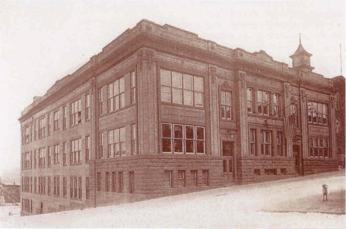Popalis Family History

Monday, July 16, 2001
Pottsville Republican/Evening Herald
http://www.schuylkill.com
Preservation group rallies to old school
Cooper put on endangered list
BY JOSH SOPHY
Staff Writer
jsophy@republicanherald.com

When it first opened, the J.W. Cooper High School in Shenandoah served as a sick bay around World War I.
Today, a historic preservation group has listed it among 10 historic sites around Pennsylvania that it says are threatened by demolition, neglect or development.
"Historically significant properties across Pennsylvania continue to be threatened, especially by development pressures or by neglect," said Patrick Foltz, executive director of Preservation Pennsylvania.
The school - which ranked 10th on the 10th annual Pennsylvania At Risk report - was built at the turn of the century by a borough resident, John J. O'Hearn.
In 1940, it received its first structural test when a major mine subsidence tested the foundation. The Lehigh Street portion of the school needed extra support and the school was shut down for about four years.
At the same time, the once prosperous northeast section of town began its slide. Both meat packing plants, Armour and Swift, shut operations.
Former industrial arts teacher and principal Henry J. Zale remembers the school as a beacon of Blue Devil pride.
"The thing that impressed me was the pep rallies," Zale, Class of 1935, said.
He remembered Shenandoah only being matched by Williamsport on the gridiron at the time as Stan Hino led the team for three years as quarterback.
Classrooms looked like any other, he said.
The "skylight" in the auditorium was always something he will remember. He also recalls that room being jammed by more than 700 at some time to view plays and the Spring Song Festival.
"It was absolutely jammed," Zale said of the shows. "It was like that for three days."
The 10th annual Pennsylvania At Risk report from Preservation Pennsylvania includes a piece of 1920s roadside kitsch - the Koontz Koffee Pot, a luncheonette in Bedford shaped like a coffee percolator.
The preservationists cite it as one of Pennsylvania's best-known examples of "programmatic architecture," in which a building's shape declares its purpose. The building has suffered greatly from neglect since the business closed, the group said.
A more traditional entry on this year's list is a group of buildings in Lancaster owned by abolitionist and public education advocate Thaddeus Stevens and his longtime associate, Lydia Hamilton Smith.
A planned convention center in downtown Lancaster was the threat to the buildings.
At first, planners wanted to demolish the buildings to make room for the convention center, but an agreement was announced in mid-June to preserve two of the Stevens-related buildings as a museum about Stevens and the Underground Railroad. The two Smith houses are to be moved to a nearby site and also made into a museum.
The preservation group said this is a good sign, but it still considers the buildings threatened until funding is worked out and a final design for the convention center is finished.
The Pennsylvania At Risk list is compiled annually with assistance from the Pennsylvania Historical and Museum Commission and local preservation organizations.
In addition to increasing awareness, inclusion on the list makes properties eligible for special consideration in applying for the Keystone Grant Program, which is administered by the Pennsylvania Historical and Museum Commission.
Copyright © 2000 - 2014 by Andrew J. Popalis
All Rights Reserved
Privacy Policy
|